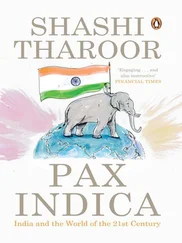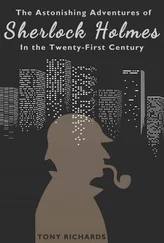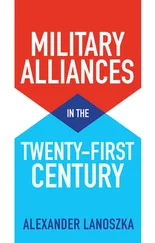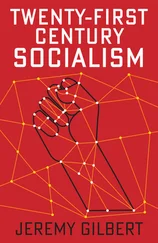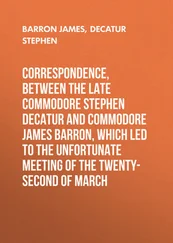The central argument of the book is simple. Up to now scholars and practitioners have explained the rise of urban warfare by reference to the global explosion of the urban population. They believe that the expansion of cities has both made urban warfare more likely and also determined its character. In fact, in order to understand urban warfare today, a better approach may, ironically, be to begin not with cities, but with the armed forces themselves. Moreover, it may be best to begin with an apparently banal fact about them, concerning their size. Since the late twentieth century, state armed forces almost everywhere have shrunk radically. This reduction has had profound implications for urban warfare. It has not only made urban warfare more likely, because armies, no longer big enough to form fronts, have been dragged into cities, but it has also transformed the anatomy of the urban battle itself. Urban battles in the twentieth century encompassed entire cities. Mass armies swamped cities, forming large fronts around and through them. Even inside cities, twentieth-century forces typically fought across the entire urban area.
Today, cities envelop the armed forces. Armies are simply not big enough to surround whole cities. Battles for cities now take place inside cities themselves, as contracted forces converge on decisive points. Because forces have shrunk, the urban battle has coalesced into a series of localized micro-sieges in which combatants struggle over buildings, streets and districts. Instead of battle-lines bisecting an entire city, sieges explode at particular locations. The urban battle is punctuated by localized fights.
It is important to understand the character of today’s localized sieges. These sieges do not just involve passive encirclement and blockade; they are not completely static. They also involve massive strikes and aggressive assaults. Is it still legitimate to call them sieges at all, then? The term ‘siege’ refers literally to a military operation in which a city is surrounded and its inhabitants forced to surrender. 30On this account, a siege involves no assault. Yet, in everyday usage, ‘siege’ is normally applied in a looser sense. A siege refers not just to encirclement, but also to positional warfare in general. In a war of position, there is little genuine manoeuvre because combatants struggle for heavily fortified positions. Yet, there are many attacks. On this definition, the siege certainly includes a partial or temporary blockade, but it also involves limited attacks on fortified positions. The inner-urban sieges of the twenty-first century have taken this second form. They involve a local blockade, encirclement and contravallation of enemy positions within the city itself. Yet, they have also included intense, attritional fights over fortified positions.
Inner-urban sieges of the twenty-first century are violent and gruelling. As Mosul has shown, they involve bitter fighting at close quarters between troops, tanks, armoured vehicles and bulldozers. Yet, they are highly complex, involving conventional, hybrid, irregular forces on the ground and aerial platforms flying high above the city. Precision artillery, deployed miles outside the city, information and cyber operations, collaboration with local militias and civil agencies have all become critical to the outcome. Consequently, the urban battle has localized onto specific sites within the city, but it has simultaneously extended out across the global urban archipelago by means of social media and information networks. Peoples across the world are now implicated in the fight as audiences, supporters and sometimes even participants. The anatomy of urban warfare in the twenty-first century has evolved, then. Even while ancient practices endure in the bitter close fight, the urban battlespace has been redesigned. Its topography has both contracted within the city, and also expanded outwards across the world. This book adopts a transdisciplinary approach to describe the architecture of this new battlescape.
There are a number of ways to analyse contemporary urban warfare. It would be possible to examine a single major urban battle and extrapolate the main features of urban warfare from that one event. Or, it would be possible to analyse and compare several urban battles. This book employs a different method. I do not tell the history of one battle, like Mosul, or several battles comparatively. Rather, I examine a suite of contemporary examples in order to identify the general anatomy of urban warfare today. Consequently, the book proceeds thematically, dissecting the urban battle to explore each of its constitutive elements in turn. I begin with an analysis of the rise of urban warfare, arguing for the importance of numbers to both interstate and insurgent urban warfare. We will then look at how reduced military forces have been compelled to change the way they fight in cities, as they are increasingly committed to localised micro-sieges. I will show how fortification, airpower, firepower, armour, partnering with local forces and information operations have become vital in these battles, reconfiguring their topographies. Each of these themes will be discussed in turn to provide a comprehensive picture of the urban battle of the twenty-first century. The book concludes with a discussion of the likely future of urban warfare over the next two decades. It considers how the micro-siege that we have seen since the early years of this century might develop in the next two decades. Will we be fighting in megacities in the 2020s and 2030s? Will robots take over? Or will cities be destroyed by mass conventional or nuclear strikes?
1 1. James Verini, They Will Have to Die Now: Mosul and the Fall of the Caliphate (London: Oneworld 2019), 16.
2 2. General Stephen Townsend, Multidomain Battle in Megacities Conference, Fort Hamilton, New York, 3 April 2018: https://www.youtube.com/watch?v=ARz0l_evGAE.
3 3. Colonel Pat Work, US Army, MWI Podcast: ‘The battle for Mosul’, 14 February 2018: https://mwi.usma.edu/mwi-podcast-battle-mosul-col-pat-work/.
4 4. Gareth Brereton, I Am Ashurbanipal: King of the World, King of Assyria (London: Thames and Hudson, 2019), 281.
5 5. Townsend, Multidomain Battle in Megacities Conference.
6 6. Townsend, Multidomain Battle in Megacities Conference.
7 7. Robert Postings, ‘An analysis of the Islamic State’s SVBIED use in Raqqa’, International Review 11 May 2018: https://international-review.org/an-analysis-of-islamic-states-svbied-use-in-raqqa/; ‘A guide to the Islamic State’s way of urban warfare’, Modern War Institute, 7 September 2018: https://mwi.usma.edu/guide-islamic-states-way-urban-warfare/.
8 8. Postings, ‘An analysis of the Islamic State’s SVBIED use in Raqqa’.
9 9. Townsend, Multidomain Battle in Megacities Conference.
10 10. Townsend, Multidomain Battle in Megacities Conference.
11 11. Stephen Graham, Cities under Siege: The New Military Urbanism (London: Verso, 2010), 16.
12 12. Timothy Thomas, ‘The 31 December 1994 – 8 February 1995 battle for Grozny’, in William Robertson (ed.), Block by Block: The Challenges of Urban Operations (Ft Leavenworth, KS: US ACGS College Press, 2003), 170–1.
13 13. Major-General Rupert Jones, OF-7, British Army, Deputy Commander, Operation Inherent Resolve, personal interview, 3 August 2018.
14 14. Amos Harel and Avi Issacharoff, 34 Days: Israel, Hezbollah and the War in Lebanon (London: Palgrave Macmillan, 2008), 191.
15 15. Raphael Marcus, ‘Learning “under fire”: Israel’s improvised military adaptation to Hamas tunnel warfare’, Journal of Strategic Studies 42(3–4) 2019, 357.
16 16. Paul Quinn-Judge, ‘Ukraine’s meat grinder is back in business’, Foreign Policy, 12 April 2016.
17 17. Virgil, The Aeneid, trans. David West (London: Penguin 2003), 37.
Читать дальше



